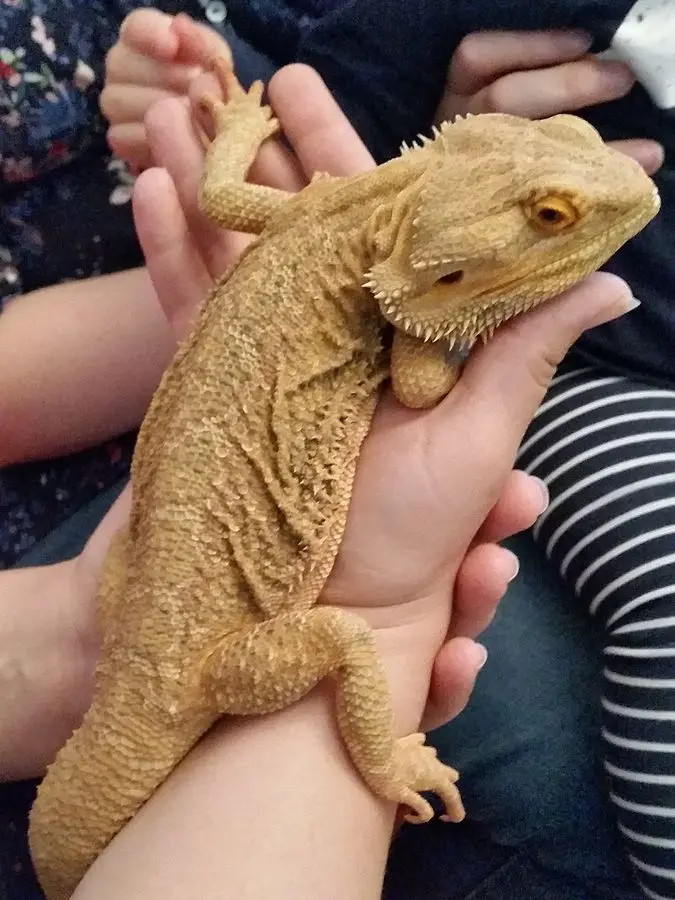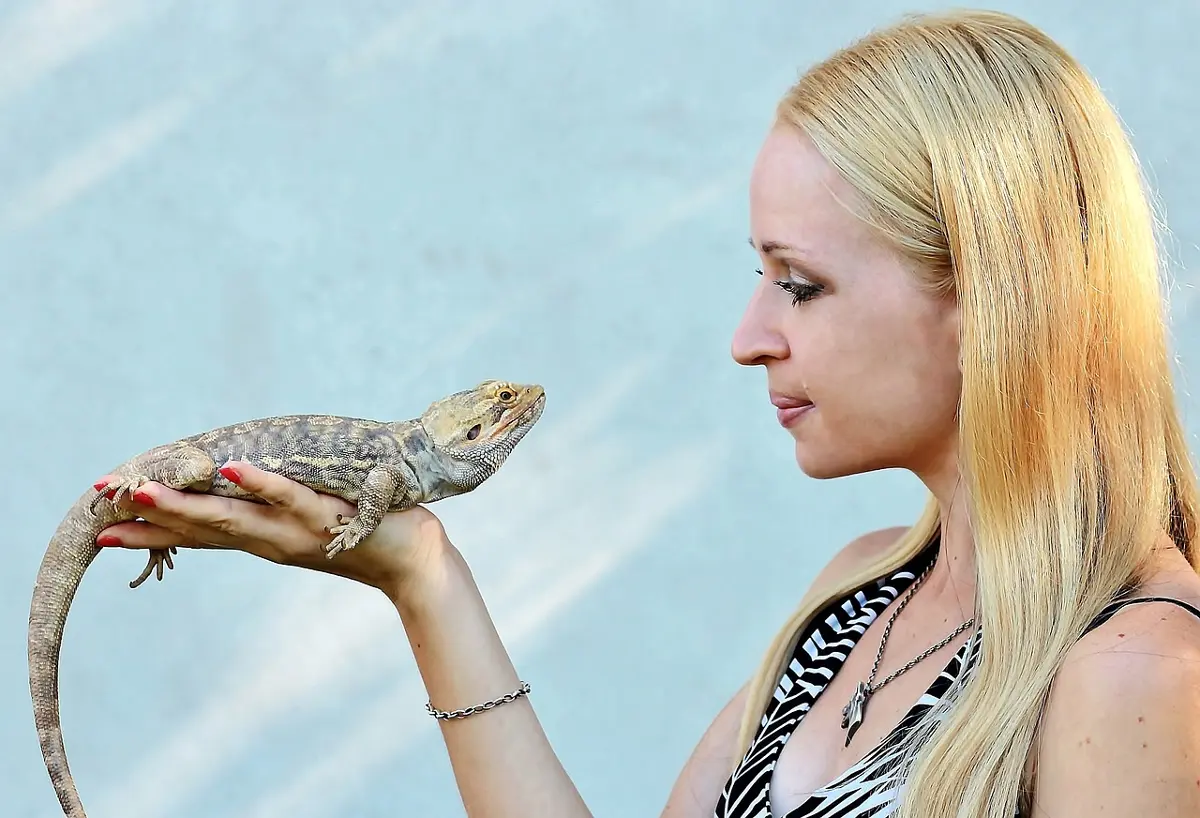When it comes to mastering ways to pick up a Bearded Dragon, it’s essential to understand this task is not as straightforward as it may initially seem.
Charming and companionable, Bearded Dragons are lauded pets across the reptile-enthusiasts community, yet they demand careful handling. This guide elucidates the correct techniques to adopt while handling these fascinating creatures.
Whether you are an established Bearded Dragon guardian or a neophyte contemplating their first reptile adoption, the process of picking up these affable creatures necessitates an intimate understanding.
Bearded Dragons: A Brief Introduction
Bearded Dragons, scientifically known as Pogona, have roots in the warm and arid regions of Australia. Despite their intimidating exterior, they earn the tag of some of the friendliest reptiles.
Fear not the spiky dread, though! It’s part of their unique charm. But, beneath the rugged exterior resides a considerably delicate creature requiring thoughtful care, especially concerning handling.
Incorrect handling has the potential to cause them to panic, which may lead to defensive behaviors or even injuries.
How To Pick Up a Bearded Dragon Without Causing Harm
This exotic pet is characterized by a rugged charm, dynamic personality, and striking rugged vigor. Yet, novices are often fraught with the worries of handling. So let’s walk you through the essential steps to effectively mastering the art of handling a Bearded Dragon.
1. Familiarity Breeds Trust
The cornerstone of successfully picking a Bearded Dragon lies in forging a bond of trust.
By following these steps, you can gain its trust:
- Gradual Approach: Hurried movements can trigger their fight-or-flight instincts. Always approach your Bearded Dragon in an unhurried and non-threatening manner.
- Eye-Level Contact: Instead of towering over them, meet them at their eye level in a non-intimidating posture. This approach reassures them that it’s you, rather than a predator, getting close.
- Hand Feeding: Acclimate them to your hand presence by offering food.

2. Mastering the Pick-Up Technique
As your bonding progresses, you can graduate to handling them.
Here’s a step-by-step guide:
- Visibility: Ensuring your dragon can see your hand is critical. A surprise grab from the back might startle them, causing them to exhibit defensive behavior.
- Signal of Intent: With your dragon aware of your approaching hand, a gentle stroke could convey your non-threatening intent.
- Under-Belly Support: The dragon’s body needs to feel supported. Slide your hand gently underneath their belly, between their two hind legs, supporting their body weight.
- Gentle Lift: With a firm yet gentle grip, lift your dragon off its perch. Your other hand should be ready to provide additional support or catch your pet if they scramble.
The principle here lies in ensuring your dragon feels safe and secure throughout the handling.
3. Holding and Interaction
Now that you’ve successfully picked up your Bearded Dragon, maintaining that comfort during the hold is equally crucial.
Here are some tips:
- Calming Presence: Keeping calm ensures your Dragon doesn’t sense panic. Maintain a firm yet gentle hold, even if they wiggle initially.
- Full Support: Make sure you’re supporting their feet and tail. Dangling legs could incite fear.
- Safe Heights: Holding them close to your body and at a lower height can prevent injuries from accidental falls.
4. Pro Tips for Smooth Handling
Beyond the basics, here are some bonus tips to improve your handling experience:
- Understand Their Body Language: Look out for huffing, puffing, or scrambling. These are some ways Bearded Dragons communicate discomfort.
- Consistency Is Crucial: Regularly incorporating handling sessions into their routine can help them grow accustomed to this exercise.
- Respecting Their Boundaries: If your Dragon seems distressed, give them some space. Respect their personal boundaries and comfort zone.
To Conclude
Remember that patience is the key to building trust with your Bearded Dragon. Each one is unique, and they may take different periods to feel comfortable around humans.
The more time and care you invest in understanding and bonding with them, the more comfortable they become with you as their caregiver.
This guide provides you with a significant foundation to foster a strong bond with your Bearded Dragon. Treat them with the love and care they deserve, and handling them can become a joyful, stress-free experience for both parties. While there might be initial hiccups, with consistent effort and understanding, you’ll soon become an expert! Happy handling!
